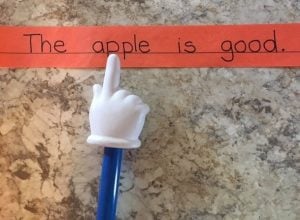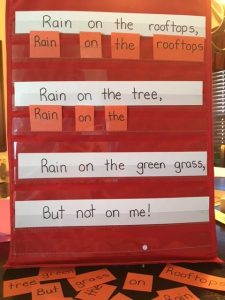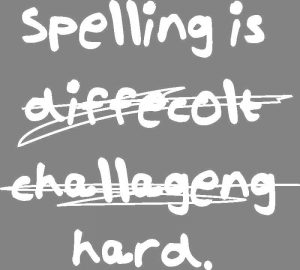by C. Elkins, OK Math and Reading Lady
Sight words are those which students can identify automatically without the need to decode. They often do not follow phonics “rules.” Examples: who, all, you, of. They may include some high frequency words (HFW). High frequency words are those which occur most often in reading and writing. By learning 100 of the HFW, a beginning reader can access about 50% of text. According to Fry, these 13 words account for 25% of words in print: a, and, for, he, is, in, it, of, that, the, to, was, you.
When are students ready to learn sight words? According to the experts from Words Their Way (Bear, Invernizzi, Templeton), student need to have a more fully developed concept of word. Concept of Word is the ability to track a memorized text without getting off track, even on a 2-syllable word. In other words, does the child have a one-to-one correspondence with words?  When tracking, does their finger stay under a 2-syllable word until it is finished, or are they moving from word-to-word based on the syllable sounds they hear? In the sentence shown, does a student move their finger to the next word after saying ap- or do they stay on the whole word apple before moving on? Students in the early Letter-Name Stage (ages 4-6) start to understand this concept. It becomes more fully developed mid to later stages of Letter Names (ages 5-8).
When tracking, does their finger stay under a 2-syllable word until it is finished, or are they moving from word-to-word based on the syllable sounds they hear? In the sentence shown, does a student move their finger to the next word after saying ap- or do they stay on the whole word apple before moving on? Students in the early Letter-Name Stage (ages 4-6) start to understand this concept. It becomes more fully developed mid to later stages of Letter Names (ages 5-8).
Students with a basic concept of word are able to acquire a few words from familiar stories and text they have “read” several times or memorized. Students with a full concept of word can finger point read accurately and can correct themselves if they get off track. They can find words in text. Therefore, many sight words are acquired after several rereadings of familiar text.
Instructional Strategies KG-2nd Grade
1. To help children gain concept of word:
- Point to words as you read text to them (big books, poetry on charts, etc.).
- Invite children to point to words.
- Pair memorized short poems with matching word cards for students to reconstruct. Using a pocket chart is helpful.

2. Explicit Instruction: Dedicated time each day for sight word work
- KG: 1-3 words per week; 1st grade: 3-5 words per week
- Introduce with “fanfare and pageantry”.
- Read, chant, sing, spell, write.
- Use them in a sentence and ask children to do the same.
- Use letter tiles, magnetic letters, word cards.
- Use with a word wall (see more info later in this post).
- Locate in text you are reading (poems, big books, stories in small group).

a box of juice
- Many sight words are hard to explain the meaning (the, was, of). Associate with a picture and phrase or sentence such as: a box of juice.
- Reinforce with small group instruction.
- Practice at learning stations: CAUTION — activities should be done with previously learned words to promote fluency. If the words are not known, then stamping them in playdough or writing them multiple times may not help you achieve your objective. Saying them correctly along with visual recognition is key. Go to this blogger’s link for many free resources for reinforcing sight words. http://www.playdoughtoplato.com/pirate-sight-word-game/ She has a simple path board game which is editable. You can put in 1-5 sight words to practice – students must say the word to their partner to advance along the path. I often require students to use the word in a sentence as well. She is a great resource for KG-2nd grade!!
- I (and experts) do not recommend using sight words on weekly spelling lists. Research suggests spelling words should follow typical orthographic patterns, which many sight words do not have (ex: who, was, all, of). If you practice sight words in ways mentioned above, students will get better at spelling them or can refer to the word wall when needed for writing assignments.
3. Flash Card Practice (Research based method) with no more than 10 words: Continue reading
